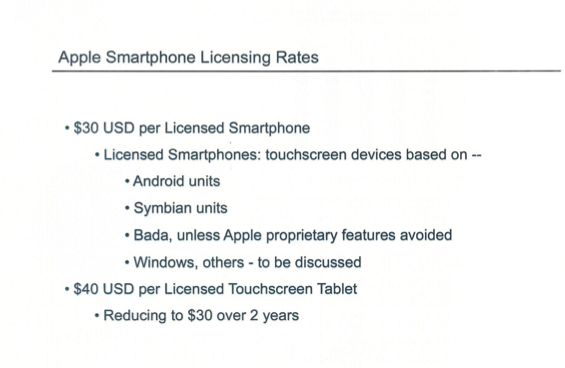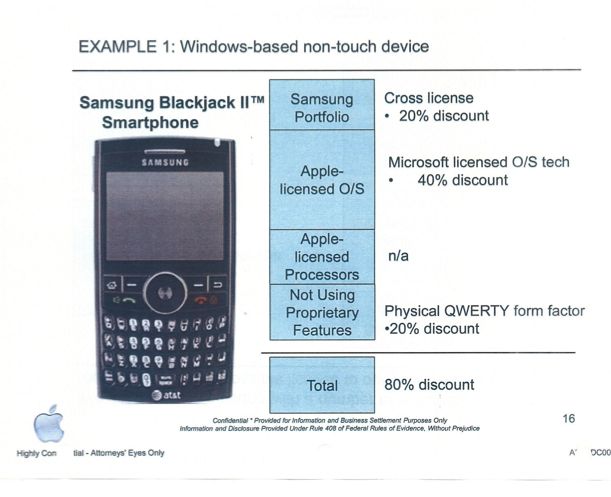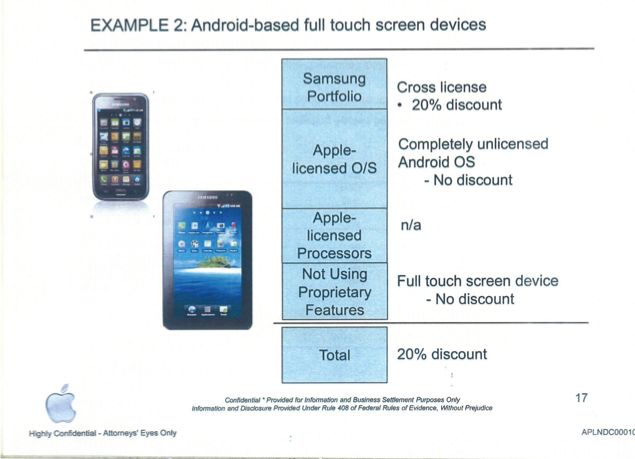


Moderator: 3ne2nr Mods
Duane 3NE 2NR wrote:Sky wrote:^Market and sales performance sometimes have little to do with the product itself as a product.
If you say that sales are high because kids, hipsters and swagaholics all want to have the IN phone, then ok.
If you say it's because the phone itself excels as a phone, then there's a problem. Because you admitted yourself that many users don't even use the phone's full functions. So sales can't reflect the power of the phone.
regardless of what they buy it for and how they use it, they still continue to buy the device and use it, even after the 6th generation of the phone. 2 million iPhone 5 preorders in 24hrs.
But hang on, i think i now realised that you misunderstood me. I never said the iPhone 5 is more powerful. Infact I think spec wise the Lumia is the more powerful device.
My point about the ecosystem was that despite having less specs or even "nothing new" is not as important as all the things you can do with it in a very easy and user friendly way because of a robust ecosystem.
So while the Lumia may have more pixels or more ram, it pales to the iPhone 5 because it doesn't yet have iTunes, Appletv, AppStore and 3rd party support.
Lumia does have massive potential though since Windows 8, Surface, Xbox, Office, Outlook etc etc will create an ecosystem of products and software that millions of people already use.

Stephon. wrote:Weird that when the s3 was released everyone was like
We don't need a bigger screen on our iPhones, the screen on the 4s is fin
Now apple gives you a bigger screen and they're like
Omfg a bigger screen *gets wet* I am so happy we all of a sudden need this extra real estate on the face on the phone even though we didn't want it just 4 months ago.
casper wrote:http://news.cnet.com/8301-13579_3-57516575-37/samsung-says-it-will-drag-iphone-5-into-legal-war/
samsung has added iphone 5 to its list of devices accused for violating patents...
Duane 3NE 2NR wrote:I'll refrain from feeding the trolls now.
Stephon. wrote:Ew Samsung why are you going to apples desperate level?
Now Samsung just looks scared of apple, which is what sparked the initial lawsuit, he fear that apple has for Samsung
n a remarkable new post-trial motion, Samsung has laid out its strategy to get the $1.05 billion verdict against it kicked out. The boldest tactic? A straightforward attack on the patent-owning jury foreman.
The Korean company hinted at this tack in an earlier, redacted brief, but now it's been laid out in full, with more than a dozen exhibits attached showcasing Hogan's allegedly offending public statements. The company's lawyers have clearly had time now to comb through the multiple interviews foreman Velvin Hogan has offered since the trial in order to find the juiciest tidbits.
His legal misstatements have been picked apart by Samsung lawyers, who noted he said design patents are based on "look and feel," and that prior art must be "interchangeable" in order to invalidate a patent. "These incorrect and extraneous legal standards had no place in the jury room," wrote Samsung in its brief.
More significantly, the brief notes that Hogan disclosed being involved in only one lawsuit—failing to mention that he was sued by his former employer Seagate Technology, a company owned in part by Samsung. That lawsuit, which demanded Hogan pay back certain house payments that Seagate had assisted him with, ultimately caused Hogan and his wife to file for bankruptcy. "Mr. Hogan’s failure to disclose the Seagate suit raises issues of bias that Samsung should have been allowed to explore in questioning and that would have triggered a motion to strike for cause or a peremptory strike," write Samsung lawyers.
Samsung also suggests that Hogan didn't disclose how pro-patent he was when asked in court whether he had "strong feelings" about the US patent system. The new motion argues that Hogan's silence didn't sync up with his later statements to The Verge that "except for my family, it [jury service] was the high point of my career... you might even say my life," and that he wanted to be satisfied "that this trial was fair, and protected copyrights and intellectual property rights, no matter who they belonged to."
The company actually suggests that Hogan come back for an additional hearing with all the other jurors, because his "conduct during voir dire [jury selection] and jury deliberations must be fully examined." The only solution is a new trial, Samsung argues.
When asked yesterday about Samsung's new accusations of dishonesty, Hogan claimed he'd disclosed everything he should have. He told a Bloomberg reporter that the court's instructions required him to disclose litigation in the last 10 years, and he was sued by Seagate back in 1993. “Had I been asked an open-ended question with no time constraint, of course I would’ve disclosed that,” said Hogan, adding that “I answered every question the judge asked me... [Samsung] had every opportunity to question me."
In addition to the arguments about Hogan, Samsung has a lot of other post-trial arguments which seem pretty run-of-the-mill and probably have little chance of succeeding. For instance, Samsung argues that no reasonable jury could have found Apple's patents valid; but if the judge had seen a problem that big with Apple's case, she could have stopped the trial altogether.
Perhaps more realistically, Samsung also asks to sharply reduce the $1.05 billion in damages it has been slapped with. For example, Samsung argues the damages for design patent infringement should be dropped by more than 95%, since "just 5% of respondents to a J.D. Power study identify visual appeal as why they purchased a phone." Even on this front, though, Samsung's arguments are similar to ones already presented during trial.
This record does not permit the inference that the allegedly infringing features of the Galaxy Nexus drive consumer demand. There is therefore no need for us to review the district court’s assessment of Apple’s allegations of irreparable harm. Regardless of the extent to which Apple may be injured by the sales of the Galaxy Nexus, there is not a sufficient showing that the harm flows from Samsung’s alleged infringement. Thus, the district court abused its discretion in determining that the irreparable harm factor counsels in favor of entering an injunction.
II. Likelihood of Success
Having held that the district court’s irreparable harm determination was an abuse of discretion, we would ordinarily refrain from addressing other issues. Here, however, it is in the interest of judicial economy that we address a limited aspect of the district court’s likelihood of success analysis that may become important on remand— claim construction. See Aspex Eyewear, Inc. v. Marchon Eyewear, Inc., 672 F.3d 1335, 1346-47 (Fed. Cir. 2012) (addressing the district court’s claim construction in the interest of judicial economy); Advanced Software Design Corp. v. Fiserv, Inc., 641 F.3d 1368, 1378 (Fed. Cir. 2011) (addressing claim construction because the “issue may become important during the proceedings on remand” even though it did not form the basis of the district court’s decision).
The parties’ main dispute concerning the likelihood of success of Apple’s infringement claim turns on the meaning of a key limitation in claim 6, which recites “a plurality of modules . . . wherein . . . each heuristic module corresponds to a respective area of search and employs a different, predetermined heuristic algorithm.” Apple argued to the district court that this limitation is satisfied as long as the QSB contains at least two modules that employ different heuristic algorithms, even if there remain other heuristic modules whose heuristic algorithm is not unique. And, Apple argued that this limitation is in fact satisfied because the QSB contains three heuristic modules that are assigned a predetermined search area and employ different heuristic algorithms (each compared to the other two). Apple identified these three modules as (1) Google, which searches the Internet; (2) Browser, which searches the Internet browsing history; and (3) People, which searches the user’s contacts list.4 Samsung counter-argued that the key limitation of claim 6 requires that every heuristic module within the accused device use a unique heuristic algorithm. It also pointed out that the QSB contains other search modules besides the three that formed the basis of Apple’s infringement argument. Because Apple had only identified three of the QSB’s modules, and there is no indication that the heuristic algorithms employed by the remaining modules are also unique, Samsung argued that Apple could not establish a likelihood of success.
The district court concluded that Apple had the better argument. It determined—and indeed the parties seem to have agreed—that under this court’s case law, the term “plurality” means “at least two,” or “simply the state of being plural.” Apple, __ F. Supp. 2d at __, 2012 WL 2572037, at *8 (citing ResQNet.com, Inc. v. Lansa, Inc., 346 F.3d 1374, 1382 (Fed. Cir. 2003); York Prods., Inc. v. Cent. Tractor Farm & Family Ctr., 99 F.3d 1568, 1575 (Fed. Cir. 1996)). It then reasoned:
Claim 6 imposes a further limitation on the “plurality of heuristic modules,” requiring that “each heuristic module . . . employs a different, predetermined heuristic algorithm.” Thus, the claim language supports Apple’s argument that the “each” requirement modifies “plurality of heuristic modules.” Consistent with Federal Circuit precedent, “each” of “a plurality of heuristic modules” means “each of at least two modules,” not “each of every module.” See ResQNet, 346 F.3d at 1382 (construing “each of a plurality of fields” to mean “each of at least two fields,” not “every field”).
Apple, __ F.Supp.2d at__, 2012 WL 2572037, at *8. Turning next to Apple’s factual allegations, the district court rejected Apple’s contention that Google uses heuristics at all. Nonetheless, it determined that the QSB is still likely to infringe because it contains at least two modules (Browser and People) that use different heuristic algorithms.
We hold that the district court’s determination that “each” modifies “plurality of heuristic modules” is erroneous because it contravenes the plain terms of the claim. The word “each” appears not before “plurality of modules,” but inside the “wherein” clause and before the phrase “heuristic modules.” The district court drew support for its construction from ResQNet. Apple, __ F. Supp. 2d at __, 2012 WL 2572037, at *8. But ResQNet in fact counsels the opposite conclusion. That case involved two different claims, one of which recited “each field,” the other one “each of a plurality of fields.” ResQNet, 346 F.3d at 1377. We thought “[t]his difference is significant” and thus construed the two claims separately, holding that the first claim meant “all fields,” the latter “at least two, but not all.” Id. at 1382. Here, the district court eliminated the very distinction that we deemed material in ResQNet by plucking “each” from where it appears and planting it before the phrase “plurality of modules.” That was error, and Apple’s reliance on ResQNet based on the assertion that it “involv[ed] almost identical claim language” is—at best—incorrect. Appellee’s Br. 46.
Although Apple defends the district court’s finding that “each” modifies “plurality of modules,” it also seems to offer a competing construction. The argument is that claim 6 requires “a plurality” (just one) in which every module has a different heuristic algorithm (compared to the other modules within that plurality). Accordingly, as long as there is one such “one plurality”—i.e., at least two modules with different heuristic algorithms—the key limitation is satisfied. As to any remaining modules, Apple points out that claim 6 uses the open-ended term “comprising” in listing the limitations and concludes that the addition of other modules does not defeat a showing of infringement. In sum, since Browser and People are two modules with different heuristics, Apple contends that the disputed limitation is met, no matter what other modules and heuristic algorithms the QSB may include.
We disagree. Apple’s argument essentially urges us to hold that “plurality” refers not to all but a subset of modules. As we pointed out, however, the district court has construed “plurality” to mean “at least two,” without any indication that the term refers to a hand-picked selection of a larger set. Nor do the parties seem to disagree with that construction, at least at this stage. Accordingly, despite the use of “comprising,” claim 6 is not amenable to the addition of other modules that do not use different heuristic algorithms because such addition would impermissibly wipe out the express limitation that requires every module to have a unique heuristic algorithm.
In that light, the specification of the ’604 patent is also not helpful to Apple. The district court correctly noted that in one instance, the specification provides that modules are “associated” with heuristic algorithms, ’604 patent col.4 l.13, whereas in another it plainly states that “[t]he heuristics of each plug-in module is different.” Id. at col.5 ll.13-14. According to the district court, the difference in the choice of words shows that using different heuristic modules is only an option, not a limitation, in the claimed invention. We are not convinced that the distinction between “associated” and “different” is as strongly suggestive as the district court found and compels us to broaden the claim language beyond what its plain reading allows.
Finally, the prosecution history of the ’604 patent also counsels against the district court’s proposed construction. In three sentences, Apple distinguished its invention from a prior art reference, referred to as “Andreoli”:
[A]s described herein, Andreoli teaches that the processor can use the solution to a constraint satisfaction algorithm to formulate a search request and employ any appropriate combination of local and remote search operations. Andreoli does not describe, however, that each of the local and remote search operations employs a different heuristic algorithm to search an associated relevant area of search for information that corresponds to the search request, in accordance with amended claim 1 (emphasis added). That is, the algorithms described in Andreoli and referenced by the Office go to the formation of the search request and not to how the local and remote search operations employed by the processor perform a search of the repositories on the network.
J.A. 1403 (emphasis added and citation omitted). The second sentence in this passage strongly suggests that every module within the claimed apparatus must use a different heuristic algorithm. The district court found that the rest of the passage gives context to the second sentence in a way that favors Apple. Apple accordingly argues that one can glean from the first sentence that the patent prosecutor distinguished Andreoli because it used a “constraint satisfaction algorithm,” not heuristics. We disagree. If Apple intended to distinguish Andreoli based on its algorithm type, then why did it not stop after the first sentence? Apple in effect invites us to hold that merely because one could have theoretically distinguished Andreoli based on its search algorithm, the prosecutor did not actually limit the claim any further. Apple, however, has distinguished Andreoli not just because the apparatus uses heuristics, but also because it employs different heuristic algorithms in different search areas. Thus, the prosecution history similarly does not help Apple show that it is likely to succeed in its infringement claim.5
CONCLUSION
We hold that the district court abused its discretion in enjoining the sales of the Galaxy Nexus.
REVERSED AND REMANDED
_______________
4 To avoid confusion, all instances of “Google” refer to the QSB’s search module. We refer to the company as “Google, Inc.”
5 Samsung also argues that People and Browser do not alone infringe claim 6 because the preamble of claim 6 requires that the apparatus search a network, and yet these two modules only perform local searches. On this record, we do not see error in the district court’s determination, however, that the preamble of claim 6 is non-limiting. Thus, we reject Samsung’s alternative argument.
jenlawrence wrote:Cell phones are in great demand. The best way to keep these delicate handsets in safe and secured position which can be possible by covering it with mobile skin.
Samsung Exhibit II Skin
A preliminary U.S. Patent and Trademark Office (USPTO) ruling has declared that Apple's "rubber band" scrolling patents invalid. According to reports from TNW and FOSS Patents, the ruling isn't yet set in stone, but it means that, for the moment, 20 patent violation claims against Samsung relating to patent no. 7,469,381 no longer stand. Crucially, FOSS Patents says, this includes one claim involved in Apple's recent courtroom victory against the Korean manufacturer.
The USPTO is reported to have found evidence of prior art in some cases, and in others the inventions were deemed to have been obvious.
The "rubber band" scrolling feature can be found throughout Apple's range of iOS and OSX devices, though Samsung has long since pulled the feature from its Android-based smartphones.
As with everything relating to the on-going litigation between Samsung and Apple, and the wider patent wars, this is not yet finalized. Nevertheless, if things proceed in this direction, it could be helpful to Samsung's appeal in the high-profile California case.





Return to “Ole talk and more Ole talk”
Users browsing this forum: No registered users and 48 guests